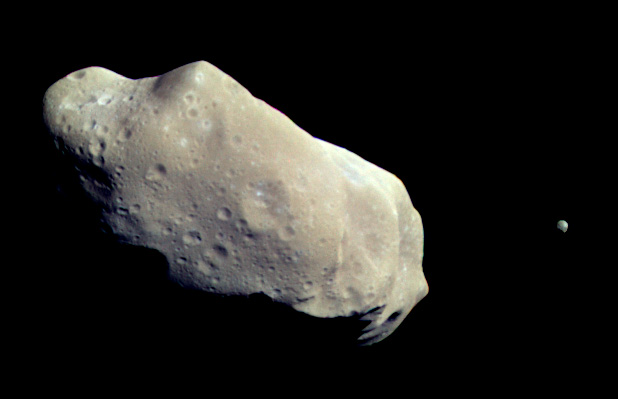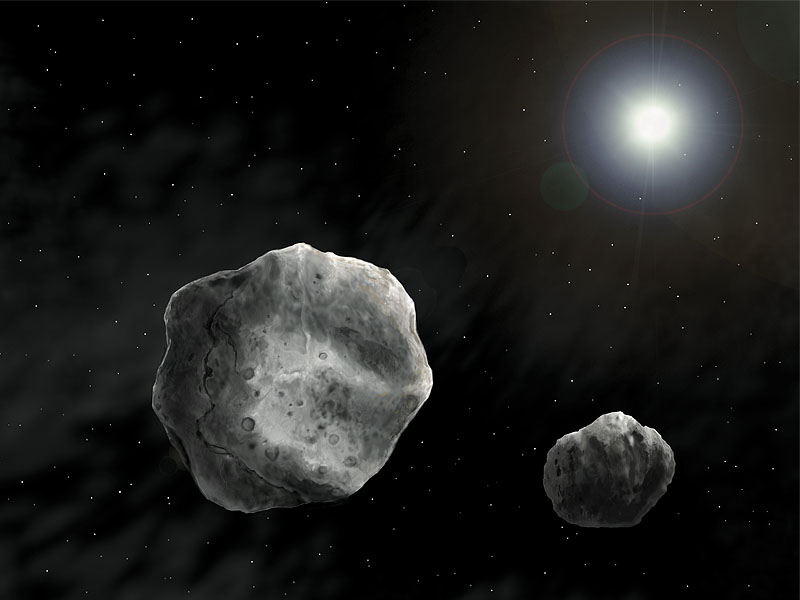Binary asteroid
A double - double asteroid or asteroid is a system of two gravitationally bound asteroids that move around a common center of gravity. If a body is significantly larger than the other, then one usually speaks of the moon or satellite of the asteroid or moon of an asteroid or Planetoidenmond. From ground- mechanical perspective, such a system is similar to the Earth-Moon system or double stars.
Proportions
For the size relationships between the main body and companion, there are basically no restrictions. So are two approximately equal-sized body possible (ratio about 1:1; examples: ( 617) Patroclus, ( 58534 ) Logos ) and body with a volume ratio of about 2500:1, as the example of (243 ) Ida and Dactyl can be seen (for comparison, the volume ratio earth: Moon is approximately 50:1). (243 ) Ida was the first asteroid from which was known to be a companion.
Orbital period
Because of the relatively small mass of the asteroid, the resulting maximum distance for stable orbits often only a few multiples of the diameter of the main body. This small distance in turn leads to a short circulation period ( often more than one revolution per day).
Formation
Due to the immediate vicinity of each other, it is assumed that both bodies are made of the same material and are at the same time side by side emerged, or both earlier times formed a body from which separated themselves the one part due to rotation or a discount.
Example
The double asteroid (175706) 1996 FG3 has a volume ratio ( main body: companion ) of 42:1 and an average distance of 3 km (2 - to 3 -fold diameter of the main body ). The orbital period of the companion to the barycenter is 16.2 hours. (175706) 1996 FG3 was at first selected as the main target for the ESA mission MarcoPolo -R, in which a landing on the main body and a sample return from asteroid back to Earth to be performed. Meanwhile, the single asteroid ( 341 843 ) in 2008 EV5 the target.

.jpg)








